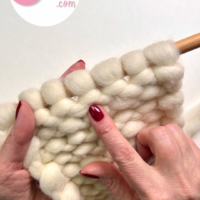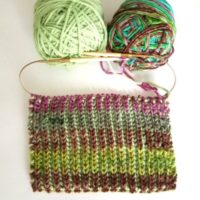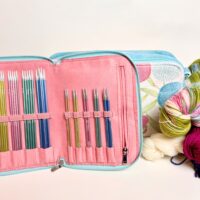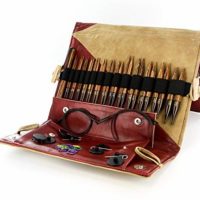Spit splicing, Russian join, tying knots – what is the best option for joining a new ball of yarn for your project? In this video, we talk about the differences, and when it’s best to use each one.
If you missed the annotated links in the video to the different methods of joining, here they are:
Spit splicing
Russian join
Changing colors for stripes
The sweater on the mannequin is my Woman’s Zippered Letterman’s Jacket, pattern + video tutorial.
The pattern for the sweater I’m wearing can be found here (not my design).
The yarn I used in the demonstration pieces is Knit Picks Wool of the Andes Bulky.
The nail polish I’m wearing is Julep color “Flora”.







I watched the spit splicing a while ago and it so cool and really works. I can join wool where ever the ball ends and you can not see it. Thanks I am a long time knitter and I love this technique. Ruth
Stacy, love, love, love your videos. I know you have made some major changes to your set recently and I want to let you know that there might be a problem with the lighting. Your skin and hair have a very purple/pink cast compared to your old set. I am not be critical just wanted to give you some feedback. Best wishes for your contiuned success!
Staci- what is the best method to use for super wash wool? I’ve tried spit splicing but it doesn’t seem to work (duh super wash doesn’t felt- obviously didn’t think that through)
I plan to use the Russian join for linen yarn. In the video you emphasized using a sharp needle but did not specifically recommend one type. What needle do you recommend that I use?
Thank you very much.
Blessings!
Sorry – I know a lot about knitting needles, but not much about sewing needles! I don’t know the name of the needle I use for Russian Join. It is long and sharp, with an eye big enough for yarn.
S t a c i
Thanks for your videos. LOVE.THEM. So, if you are knitting stripes in the round, you probably have to resort to the last option, assuming you had to switch colors at a certain spot?
Your Russian join video of several weeks (month) ago has changed the look of my knitting in such a good way. I really should examine spit splicing as well.
Hi Patti – yes, to work stripes, you can only really cut the yarn and tie a knot. When working stripes in-the-round, you probably want to use this technique as well:
https://verypink.com/2010/03/15/correcting-color-change-jog/
S t a c i
Hi Staci, I working on my first shawl pattern called Zuzu’s Petals on circular needles. I’m using Malabrigo Rios yarn which is Pure Merino superwash. I’m going to have to start a new ball at some point during the lace portion and thinking ahead was wondering if you could tell me which would be the best way to join the new ball. I don’t want it to come apart after I’m done since it is looking so good right now and it’s my first real pattern with a good quality yarn.
Thanks for any advice you could offer me.
Linda – your best bet is to try them out…I’m not familiar with that yarn, so I can’t offer you advice to which method will work best.
S t a c i
Hi Staci-
Can you tell me what the difference is between Aran and worsted and are they interchangeable?
Thank you.
Jill – here is a yarn weights chart that explains it: http://www.craftyarncouncil.com/weight.html
Aran is usually a bit heavier than worsted, but if you can get gauge with either yarn for any given pattern, then they are interchangeable.
S t a c i
Hi Staci,
As always, this video was well done and very informative, thank you! I noticed, however, that the first two joins–spit splicing and the Russian join–only work for plied yarns. Do you have any suggestions for joins for single-ply or roving-type yarns? Thanks!
Adrianne,
I used the spit splice on Blue Sky’s Suri Merino, a single ply alpaca/merino blend, and it worked like a charm.
The trick is to kind of gather the fibers into their own little “plies”, twist them around each whole fiber, and then spit and splice. Also, I did _not_ trim out an inch of ply from either end. And I did about an inch and a half splice.
I was shocked at how strong the splice
Just looking at the join, I could easily tell where the join was because the “floofiness” of the yarn was kind of matted down, but after I actually knit with it, I couldn’t tell at all.
A really amazing trick.
What is the best join for cotton yarn in the round?